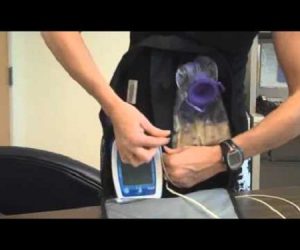Enteral nutrition is a type of medical procedure whereby patients are provided with nutrients through a tube. There are different ways to achieve this, including by syringing liquid into a tube, or by delivering continuous nutrition through Kangaroo feeding pumps. In many cases, this is a life saving procedure.
Why Someone May Require Kangaroo Feeding Pumps
There are many reasons as to why someone may require enteral nutrition, including:
- Those with bowel obstruction.
- Those with Crohn’s disease.
- Those with short bowel syndrome.
- Those with ulcerative colitis.
- Those with certain forms of cancer.
- Those in a coma.
- Those with severe anorexia.
- Those on a hunger strike.
It is generally preferred to use enteral nutrition, through the nose, but there are some situations in which the tube has to be inserted through the stomach wall.
When Do Patients Need Enteral Nutrition?
There are many reasons as to why patients may have difficulties in eating. If their gastrointestinal (GI) tract is otherwise functioning properly, then this type of feeding would be preferred over intravenous nutrition. By using the GI tract, nutrition is almost natural, which means it better supports the immune system. If, for instance, someone had a stroke and have developed dysphagia, they could develop severe pneumonia by swallowing liquids and solids into the lungs. These patients will usually be provided with a feeding tube through the nose. If it appears that they will require long term nutrition, they will be fitted with a gastrostomy tube, through the stomach wall.
Examples of Enteral Access
Tube feeding, as discussed, refers to providing nutrition directly into the GI tract. This can be done through a surgically made hole, a catheter, or a tube. As stated, this is recognized as the best way to feed patients who are incapable of getting sufficient calories themselves. An enteral access device is a feeding tube that goes straight into the GI tract in order to ensure fluids and nutrients are delivered, but also to deliver medication.
An oral or nasal tube can be put in place through an endoscopy, or at the bed side. Nasal tubes are known as nasoenteric tubes, end their end generally enters straight into the stomach. Sometimes, however, it will be placed into the small intestine’s first part (duodenum) or second part (jejunum). Jejunostomy and gastrostomy tubes are inserted percutaneously (through the skin) by making a small incision in the top part of the abdominal wall. A radiologist will usually perform this procedure while guided by x-rays, by an endoscopist using an endoscopy, or by a surgeon under general anesthetic.
It is preferred to use nasal tubes that enter into the stomach, as this is the procedure with the lowest risk of complications. However, if it is projected that someone will require enteral feeding for a period longer than four weeks, it is more likely that the tube will be inserted through the skin. All procedures have complication risks, which is why it is important for a multidisciplinary team to determine what the best option is.





